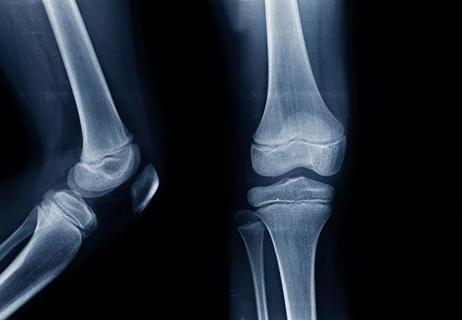Most males usually stop growing by age 18, but some may continue growing into their 20s

If you followed a group of middle school students through their high school years, you’d likely see a common pattern. Most of the girls start out taller. But once they reach high school, the boys catch up.
Advertisement
Cleveland Clinic is a non-profit academic medical center. Advertising on our site helps support our mission. We do not endorse non-Cleveland Clinic products or services. Policy
And long after the girls have reached adult height, some boys keep growing and growing … and growing. “Males can keep growing as long as their growth plates haven’t closed, which usually happens by age 18,” explains pediatrician Joshua Coleman, MD. “But in rare cases, guys can grow a little more into their early 20s.”
Boys hit their adult height once they’ve finished puberty, usually between the ages of 16 and 18.
But these numbers are averages, not hard-and-fast rules.
“Puberty begins at a slightly different time for everyone,” clarifies Dr. Coleman. “Some boys shoot up rapidly as soon as puberty begins, while others have a slow and steady pace. And of course, some girls are naturally taller than boys. This is all normal.”
It’s also common for some boys to have constitutional delayed puberty, which just means they’re “late bloomers.” If this happens to you or your child, don’t panic.
“This type of delayed puberty isn’t a health issue — it’s just how their body is designed,” he notes. “As long as boys are showing other signs of puberty by age 14, they will likely still reach their full adult height. They just might reach it at 18, rather than 16 or 17.”
This is why visits to your pediatrician are important.
Advertisement
“At your well-checks, we can make sure your child’s growth is on target,” he adds. “We also screen for health issues that may interfere with their growth and development.”
Some men continue to grow past age 18, but this is rare. If they do experience this late growth, it’s usually an inch or fewer. “A growth spurt is very unlikely to happen past age 18,” Dr. Coleman notes.
A man stops growing when his growth plates have fused, or closed.
“Your growth plates are areas of cartilage near the ends of bones,” he explains. “These areas of cartilage provide a sort of scaffolding that later gets filled in with bone tissue to make the bones longer. As the years pass, your growth plates gradually harden into bone until there’s no cartilage left.”
If you do keep growing past age 18, check in with your provider. “Growing at age 19 or 20 isn’t necessarily a sign of a health problem, but ask your provider about it,” advises Dr. Coleman. “It’s likely a case of a late bloomer whose growth plates haven’t completely fused yet. But in rare cases, continued growth can be due to acromegaly, which is a condition that causes too much growth hormone.”
And don’t believe the hype that men continue to grow past age 25. There’s no evidence to show that this is possible. “Even very late bloomers complete puberty before age 25,” he states.
The bones in your feet stop growing in length usually around the same time you’ve met your full height potential. In fact, studies haven’t found that foot size correlates directly with a person’s height at all.
“A boy who’s 5 feet 9 inches could have the same size feet as a boy who’s over 6 feet tall,” shares Dr. Coleman. “Some people just genetically have bigger or smaller feet.”
That said, your feet (as well as other parts of your body) may change in shape and size over time. Cartilage also continues to grow as you age, so you may notice minimal size differences in your nose or ears as you grow older.
At the end of the day, people come in all heights and sizes. Oftentimes, boys feel pressure to be tall. But that isn’t something you can really control, and health is far more important than height.
“Proper nutrition, good quality sleep and regular well-checks will help you grow to your full potential,” emphasizes Dr. Coleman. “Above all, be proud of the height you’ve been given — it’s part of what makes you the unique person you are.”
Advertisement
Learn more about our editorial process.
Advertisement

Globally, the average height for men ranges from 5 feet 3 inches to 6 feet 0.4 inches, but varies based on a variety of factors

In the U.S., the average height for women is 5 feet 3.5 inches, and it ranges from 4 feet 11 inches to 5 feet 7 inches around the world

This therapy may be recommended at any age, but it’s commonly started before puberty

Treatments are designed to help with growth hormone deficiency, which can affect your child’s height

You can treat these short-lived symptoms with a warm bath or massage

Facts on nighttime pain from a pediatrician

An unexplained lump, swelling, discomfort or changes to your testicles shouldn’t be ignored

The best parenting style balances enforcing rules and showing plenty of love

Tips include cutting back on sugar, focusing on exercise and managing stress

It can be harder to let go when you’ve invested time, energy and emotions — but it might be the healthier choice long term